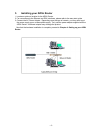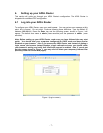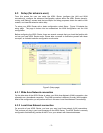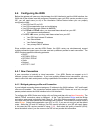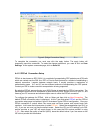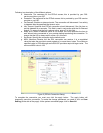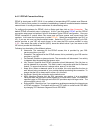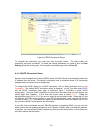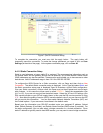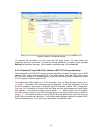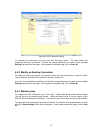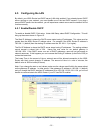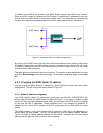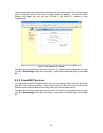4.4.1.3 PPPoE Connection Setup
PPPoE is also known as RFC 2516. It is a method of encapsulating PPP packets over Ethernet.
PPP or Point-to-Point protocol is a method of establishing a network connection/session between
network hosts. It usually provides a mechanism of authenticating users.
To configure the gateway for PPPoE, click on Setup and then click on New Connection. The
default PPPoE connection setup is displayed. At the Type field select PPPoE and the PPPoE
connection setup page is displayed; figure 6 illustrates a typical PPPoE configuration. Give your
PPPoE connection a unique name; the name must not have spaces and cannot begin with
numbers. In this case the unique name is called PPPoE1. Select the encapsulation type (LLC or
VC); if you are not sure just use the default mode. Select the VPI and VCI settings; your DSL
service provider or your ISP will supply these; in this case the DSL service provider is using
0,100. Also select the quality of service (QOS); leave the default value if you are unsure or the
ISP did not provide this information.
Following is a description of the different options:
h. Username: The username for the PPPoE access; this is provided by your DSL
service provider or your ISP.
i. Password: The password for the PPPoE access; this is provided by your DSL service
provider or your ISP.
j. On-Demand: Enables on-demand mode. The connection will disconnect if no activity
is detected after the specified idle timeout value.
k. Idle Timeout: Specifies that PPPoE connection should disconnect if the link has no
activity detected for n seconds. This field is used in conjunction with the On-Demand
feature. To ensure that the link is always active, enter a 0 in this field.
l. Keep Alive: When on-demand option is not enable, this value specifies the time to
wait without being connected to your provider before terminating the connection. To
ensure that the link is always active, enter a 0 in this field.
m. Set Route: Specify this connection as the default-route.
n. MRU: Maximum Receive Unit the DSL connection can receive. It is a negotiated
value that asks the provider to send packets of no more than n bytes. The maximum
specified value is 1500 although some DSL/ISP providers require a larger value. The
minimum MRU value is 128.
o. Enforce MRU: Check this box if you experience problems accessing the Internet over
a PPPoE connection. This feature will force all TCP traffic to conform with PPP MRU
by changing TCP Maximum Segment Size to PPP MRU.
- 13 -




